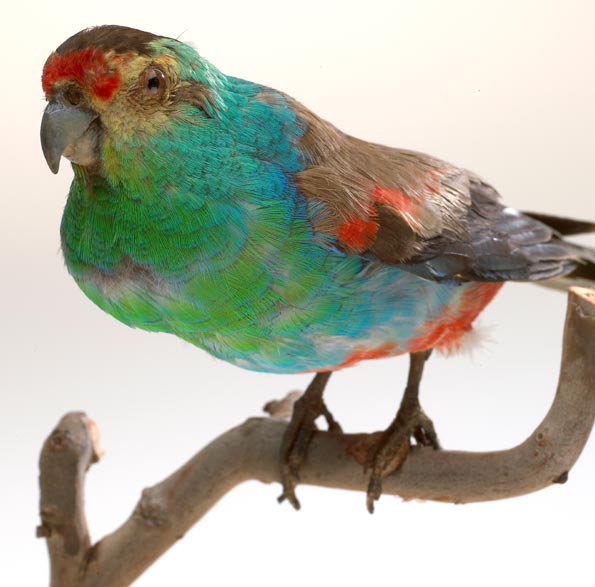 Paradise parrot
Paradise parrot
TLF ID R6889
This is a colour photograph of a preserved paradise parrot ('Psephotus pulcherrimus'). It is a museum specimen displayed perching on a branch. The bright plumage colours for which it is well known are clearly visible.
